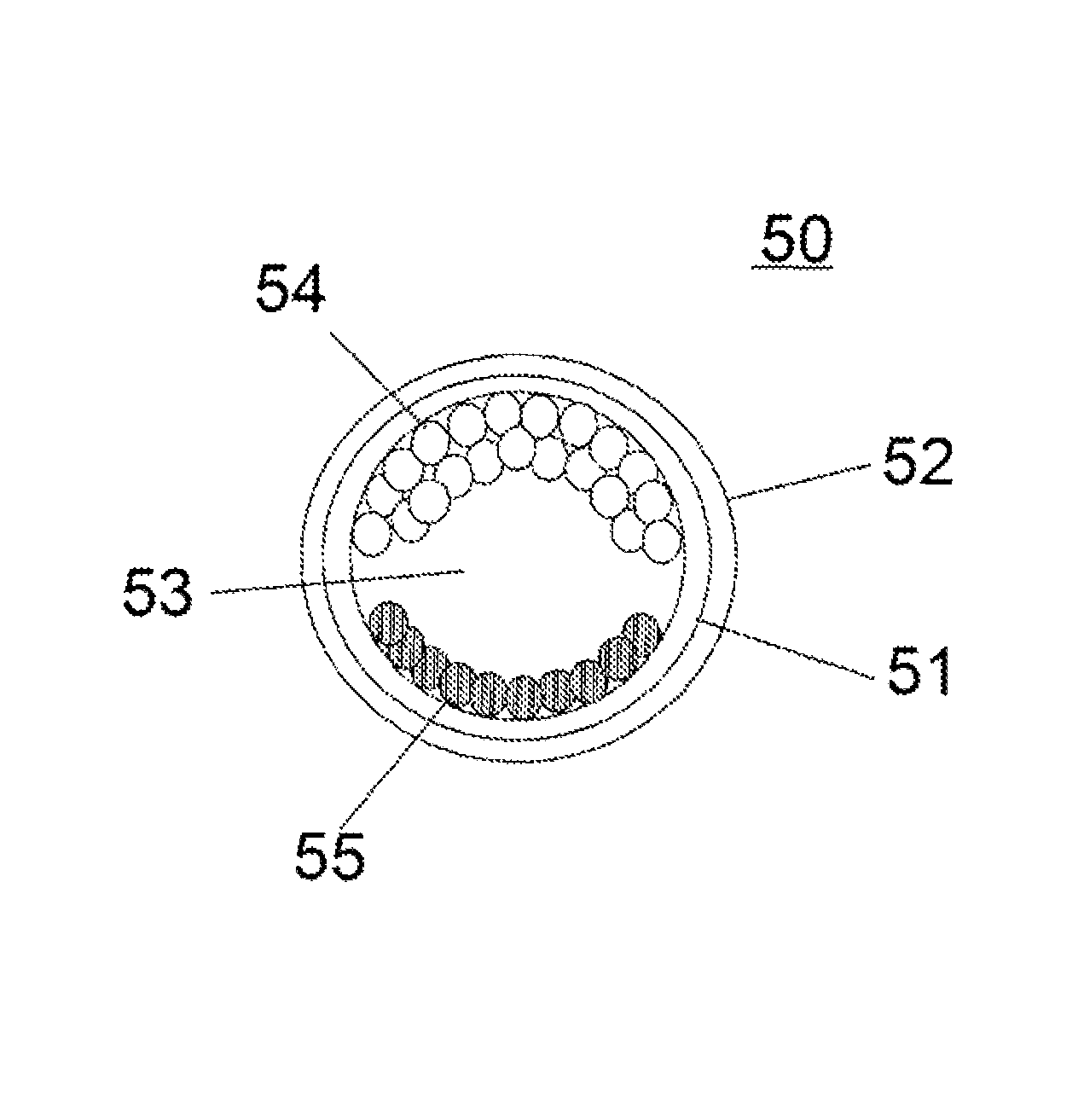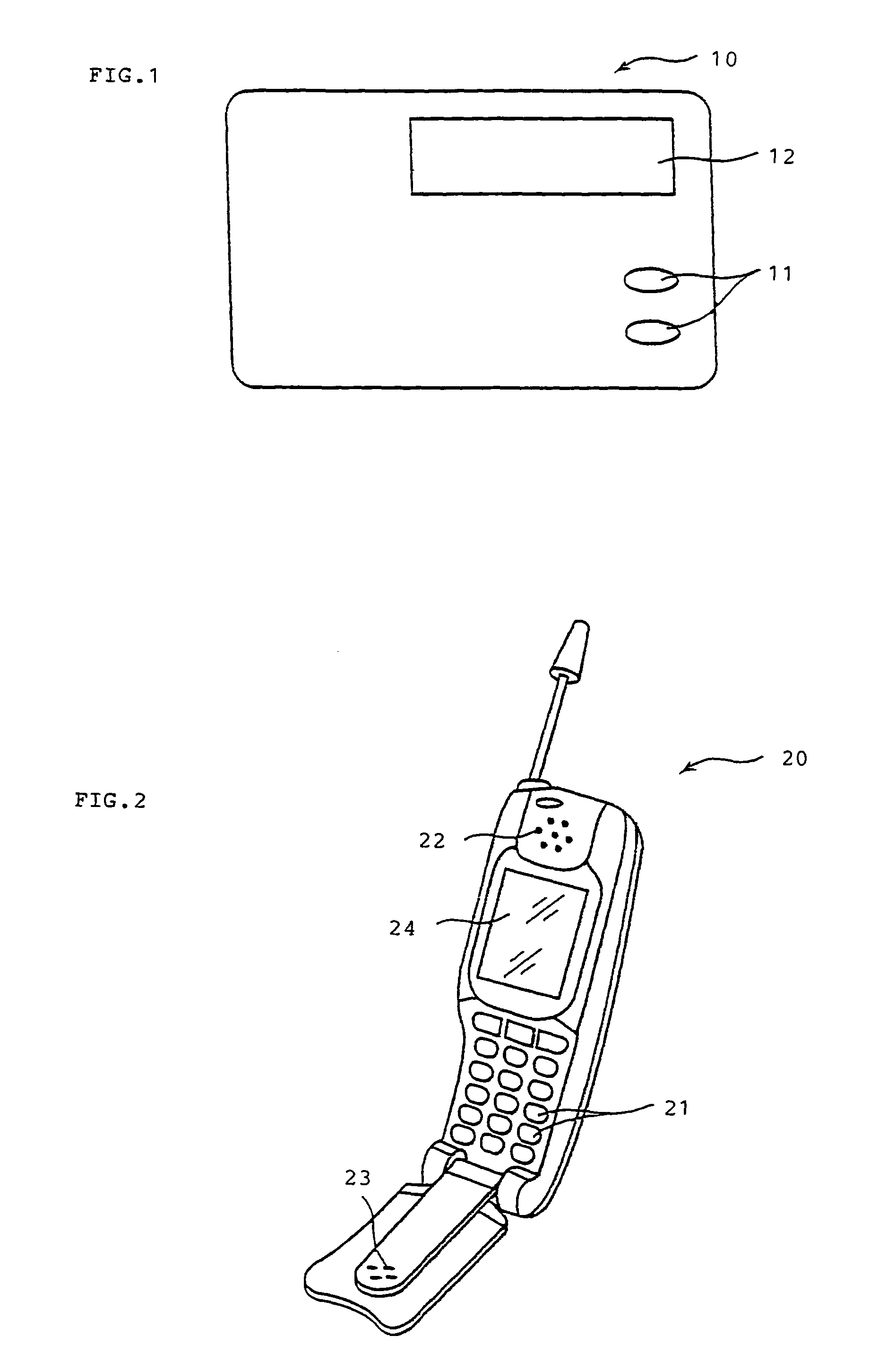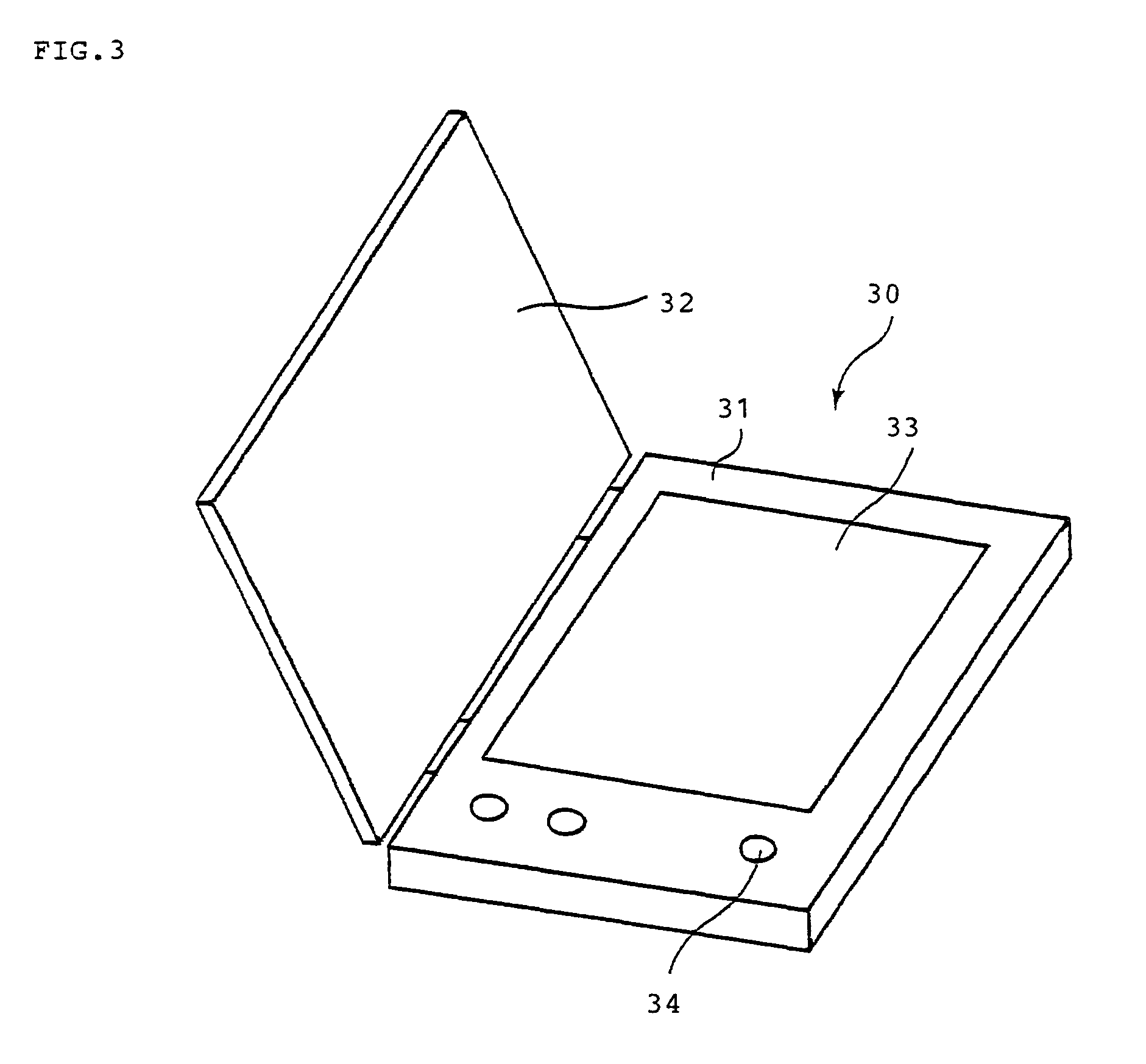Microcapsules for electrophoretic display devices, and processes for their production, and their applications
a technology of electrophoretic display device and microcapsule, applied in the direction of optics, thin material processing, instruments, etc., can solve the problems of coating solution giving rotten smell on the third day, display performance not being effectively applied, display performance being reduced, etc., to achieve high capsule strength and solvent resistance, low leakage current value, and high contrast
- Summary
- Abstract
- Description
- Claims
- Application Information
AI Technical Summary
Benefits of technology
Problems solved by technology
Method used
Image
Examples
synthesis example 1
[0187]A 100-mL round-bottomed separable flask was charged with 7.5 g of melamine, 7.5 g of urea, 30 g of a 37% aqueous formaldehyde solution, and 3 g of 25% ammonia water, and the mixture was heated to 70° C. under stirring. After the mixture was kept at the same temperature for 1.5 hours, the mixture was cooled to 30° C. to obtain an aqueous solution (A-1) with a solid content of 54.4% containing a melamine-urea-formaldehyde initial condensation product.
synthesis example 2
[0188]A 100-mL round-bottom separable flask was charged with 13 g of melamine, 2 g of benzoguanamine, 30 g of a 37% aqueous formaldehyde solution, and 3 g of 25% ammonia water, and the mixture was heated to 75° C. under stirring. After it was observed that the entire mixture became transparent when it reached 75° C., the mixture was immediately cooled to 30° C. to obtain an aqueous solution (A-2) with a solid content of 54.4% containing a melamine-benzoguanamine-formaldehyde initial condensation product.
synthesis example 3
[0189]A 100-mL round-bottom separable flask was charged with 15 g of melamine, 30 g of a 37% aqueous formaldehyde solution, and 3 g of 25% ammonia water, and the mixture was heated to 70° C. under stirring. After the mixture was kept at the same temperature for 15 minutes, the mixture was cooled to 30° C. to obtain an aqueous solution (A-3) with a solid content of 54.4% containing a melamine-formaldehyde initial condensation product.
PUM
| Property | Measurement | Unit |
|---|---|---|
| RH | aaaaa | aaaaa |
| temperature | aaaaa | aaaaa |
| temperature | aaaaa | aaaaa |
Abstract
Description
Claims
Application Information
 Login to View More
Login to View More - R&D
- Intellectual Property
- Life Sciences
- Materials
- Tech Scout
- Unparalleled Data Quality
- Higher Quality Content
- 60% Fewer Hallucinations
Browse by: Latest US Patents, China's latest patents, Technical Efficacy Thesaurus, Application Domain, Technology Topic, Popular Technical Reports.
© 2025 PatSnap. All rights reserved.Legal|Privacy policy|Modern Slavery Act Transparency Statement|Sitemap|About US| Contact US: help@patsnap.com



